La Grande Boucle, La Course and the return of the women's Tour de France
'The perfect women's Tour de France, in my mind, would be like we did it back in 1984' says inaugural winner Marianne Martin
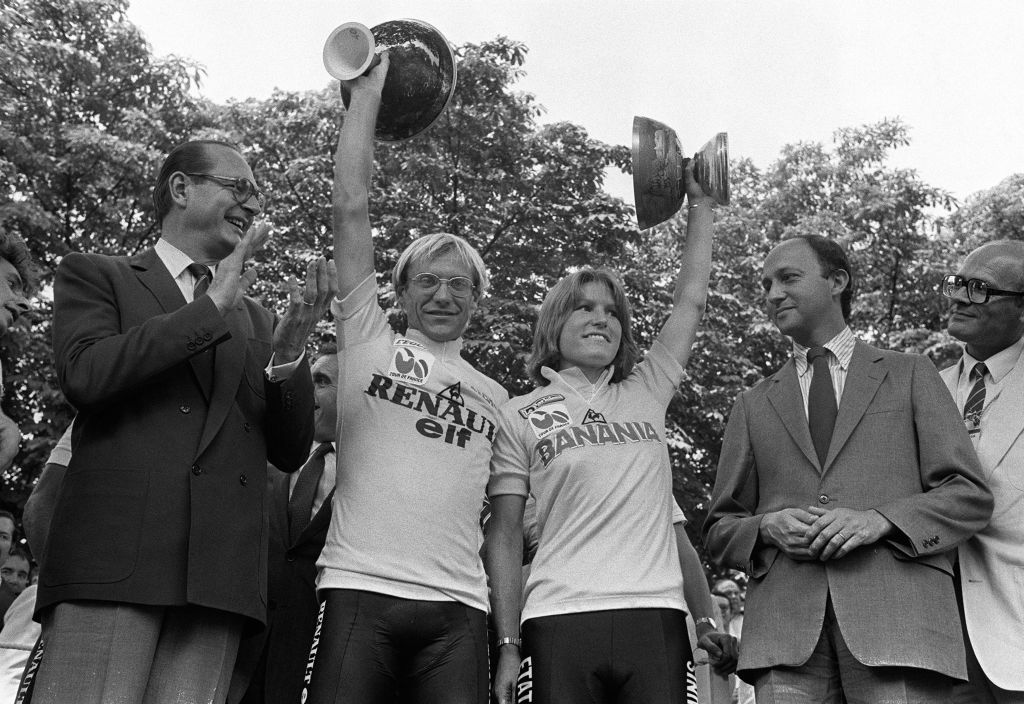
This article originally appeared as part of the Cyclingnews 25th anniversary series, and to mark such an important milestone, the editorial team published 25 pieces of work that look back at the sport over the last quarter of a century.
The men's Tour de France is rich in history, with its beginnings in 1903. A women's version found its roots much later, and under a different organisation, as a one-off multi-day race won by the Isle of Man's Millie Robinson in Normandy in 1955.
The women's peloton wouldn't see their first official launch of the women's Tour de France until 1984, and American Marianne Martin won it. It was an 18-day race held simultaneously as the men's event and along much of the same but shortened routes with shared finish lines. The Société du Tour de France, which later became part of Amaury Sport Organisation (ASO) in 1992, managed both events.
The women's Tour de France ended in 1989, and while ASO went on to organise women's one-day races like La Flèche Wallonne and Liège-Bastogne-Liège, La Course, and the Paris-Roubaix Femmes, the women's peloton had not been included as part of the official Tour de France for the past 30 years.
ASO launched the rebirth of the Tour de France Femmes in 2022, which was won by Annemiek van Vleuten on La Planche des Belles Filles. Demi Vollering won the next edition, held in 2023, which included the Col du Tourmalet. The Tour de France Femmes became a hugely popular event in just two years and will embark on its third edition, which will be held from August 12-18 and conclude atop the iconic Alpe-d'Huez.
Cyclingnews launched its first pages on the internet in 1995, six years after the women's Tour de France had ended, and we have covered the event in every version of the race since.
We followed the lineage of the Tour Cycliste Féminin, which had started in 1992, and the re-named Grande Boucle Féminine Internationale until it came to an end in 2009.
Get The Leadout Newsletter
The latest race content, interviews, features, reviews and expert buying guides, direct to your inbox!
Pierre Boué organised the Tour Cycliste Féminin and the Grande Boucle, and although it was not the women's Tour de France, it was one of the most prominent women's stage races of that period, and widely regarded as a women's French Grand Tour.
In this feature, we take a look at how Cyclingnews covered the Tour Cycliste Féminin and the Grande Boucle Féminine Internationale through the 90s and early 2000s, along with ASO's introduction of La Course in 2014.
We will also highlight the new ASO-run women's Tour de France - Tour de France Femmes avec Zwift.
Women's Tour de France 1984-1989
We would be remiss not to highlight the women's Tour de France in 1984 with memories from the overall champion Marianne Martin.
Following her historic victory, the next editions were won by Italy's Maria Canins (1895-86) and France's Jeannie Longo (1988-89). The Société du Tour de France cancelled the women's race from the Tour de France in 1989, but those original six editions marked the height of ASO-run women's stage racing.
Back then, the women's field was racing 18 stages that followed the last 80km, or so, of the men's route, and they would finish two hours before the men at the same finish line. The women also climbed iconic mountains such as l'Alpe d'Huez. It was the only time that the women's Tour de France existed alongside the men's Tour de France.
Martin was the last rider selected to the American team to race in the inaugural women's event. Her strength in the mountains earned her the overall race lead partway through the 18-day race. She wore the yellow jersey into Paris. After crossing the finish line, she celebrated her victory alongside Laurent Fignon, winner of the men's race, together on the podium on the Champs Elysees.
Find out more about the the women's Tour de France held in the 1980s in our special feature interview with Marianne Martin: Remembering the magic of the 1984 women's Tour de France, which includes rarely seen racing galleries and results. Also, see our feature highlighting the pioneers of the women's Tour de France that reunited at the event's rebirth in 2022.
Marianne Martin
The biggest thing that I remember about racing the women's race was that they didn't think we would finish it. We all knew that we could finish it, but it was disheartening, maybe more amusing, that the attitude was that the women weren't going to finish the race. But even with dealing with that, the whole thing was amazing, the entire time, we would go out into different towns, and the French relished the bike racing. We didn't have that in America, so the racing was amazing for that reason.
We raced 18 stages, usually the last 60 to 80 kilometres of the men's course, about two hours before they did, which was cool because the roads were already closed, and people were out there to watch the racing. We had big crowds, and it was so much fun to race with so many people out watching. My name was written on the roads, which was super cool, and there was incredible enthusiasm for bike racing, which was awe-inspiring. Fans were out there having picnics, wearing costumes, and it was magical.
We raced up the Col de Joux Plane later in the race; that was my most memorable climb of that race. It was my hardest day because the best riders were working hard against me to get one of their riders off the front, so I had to work hard.
We came around this corner and you could look up and see the mountain as it twisted and turned around, miles and miles of road and all lined with people, which was cool. It was overwhelming because I thought, 'oh my gosh, I'm already tired.' There was no structure, and people just filled up all along the road right before I raced through. I looked ahead and saw a sea of people, not even sure where to go, because you can't see the road, and the fans part as you ride up the climb and through them.
I made it to the top. It's amazing what our bodies can do because when I looked at that climb and thought, 'there's no way,' but then you just do it. Our minds define what our bodies can do. As much as the race was amazing, it was also amazing to learn what we could do.
There were press there, but there wasn't a lot following the women's race. I remember a photographer taking a picture of me brushing my hair in front of a mirror, that's what he wanted me to do, and that's how he set it all up, and I remember thinking to myself, 'would you do this for the guys?'. [The press] had asked us to join the men for the photos, too. The top three in the [women's race] GC went over to where the men were staying. There was a photoshoot with Laurent Fignon. Vincent Barteau, who was in yellow at that point of the race, and I were talking, and he pointed at Fignon and said, 'he's going to win,' and I remember thinking, 'I'm going to win.' It's not my personality to say something like that, but I felt that I could win it and that I was going to win it.
I went into the race to win the polka-dot jersey and I won all the significant climbs. The final day was not a parade. It was a race because Heleen Hage, who was in second place, was only three minutes behind, and so if I had a flat tire or something, I could have lost it. I stayed right on her wheel so that she couldn't get off the front, and the Dutch riders were a strong team. When we came down the Champs Elysees, I heard someone say 'go Marianne,' and I saw my dad on the next lap.
They did the women's final podium first, then the men's podium, and then at the end, they put Laurent and I up there together. It was surreal.
Tour Cycliste Féminin - 1992-1997
The cancellation of the women's race from the official Tour de France under Société du Tour de France left a gaping hole in the women's calendar for three years, until Pierre Boué created the Tour Cycliste Féminin in 1992. It was not the official women's Tour de France, but it began at nine stages and grew to 14 at its height. It included climbs through the Pyrenees and the Alps, and although there were plenty of organisational concerns, the race made the women's peloton feel that they had their version of the Tour de France.
Lorentian van Moorsel (Netherlands) won the first two editions of the Tour Cycliste Féminin in 1992 and 1993, beating Longo the first year and multi-time track world champion Marion Clignet the second year. Heidi van der Vijver was third in both editions.
Clignet remembered the race in 1993 covering more than 1,000km with 14 stages in 12 days, and concluding at the top of L'Alpe d'Huez.
Marion Clignet
It was also one of the longest editions [under Pierre Boué], and he wanted to prove that women could ride longer races and that we weren't going to die from it. Pierre wanted to have a lot of drama around it and have a showdown between the top riders.
There were 12 stages, and there was a prologue in Paris, a team time trial, an individual time trial, and we also rode l'Alpe d'Huez. It was brutally hot in the individual time trial, and I won it by a little over a second to Clara Hughes, so it was pretty full-on. Racing up the l'Alpe d'Huez was a big deal for us because the women had not raced the big mountains. I had never raced up it before, and so that was a significant experience for me.
I expected it to be super hard, but I remember the turns and switchbacks being similar to the banking in a velodrome, where you get launched out of the turns to hit the next ramp. One thing I remember about l'Alpe d'Huez was that it knows how to welcome cyclists, and we had a very nice welcome with lots of people, and a separate following for the women's race, which was still a discrete race at that time, but lots of locals, family and friends. I think if the women's Tour de France were to happen today, there would be the same fanfare as the men's race on that climb.
Leontien van Moorsel won the overall title that year, and she was above, and beyond everybody; she won all of the jerseys, except for the hotspots. I was second overall by eight minutes down on van Moorsel, and Heidi van der Vijver was third at over nine minutes down, then Fabiana Luperini was 12 minutes down.
I think one of the biggest highlights and moments was that we were racing up l'Alpe d'Huez. It was the beginning of an era of change and maybe a forward step for women's cycling. Even today, I find it dramatic that since then, there hasn't been a race that has included climbs like the Tourmalet or l'Alpe d'Huez, those big climbs.
Bill’s Cycle Racing Results and News Service - 1995
In 1995, a man named Bill Mitchell founded Cyclingnews. It started as Bill's Cycle Racing Results and News Service, and it was a newsletter that quickly morphed into an online page on the world wide web, and was largely supplied by information sent to him through email and fax. Suddenly, all races - big and small - and including the Tour Cycliste Féminin, appeared on Bill's Cycle Racing Results and News Service.
A 21-year-old Italian, Fabiana Luperini, burst onto the women's circuit in 1995. The year that she became one of the most accomplished climbers in the sport's history after winning both the Giro d'Italia Femminile and the Tour Cycliste Féminin.
The 1995 edition of the race was mountainous, and Luperini remembers racing up the Madeleine, the Glandon, and the Tourmalet, and it reportedly also included l'Alpe d'Huez. It was supposed to be a showdown between the up-and-coming Luperini and the veteran Jeannie Longo. In the end, it wasn't quite the contest everyone had envisioned because Luperini put eight minutes into Longo on the Madeleine and subsequently won her first overall title at the Tour Cycliste Féminin.
The results and brief bulleted insights from the 1995 Tour Cycliste Féminin could be found on the daily pages of Bill's website.
It wasn't until the following year that the Tour Cycliste Féminin got its own landing page on Bill's website, which made it easier to locate results and information about the race.
In his second year online, Bill was already facing the demands of cycling fans wanting more coverage of women's racing, and he felt compelled to defend his work in a Bill's Editorial Comment section located at the top of the homepage for the 1996 Tour Cycliste Féminin. He explained to his readers that a lack of women's content reflected the bias toward men's sports in the mainstream press.
"I should add that France's premier sporting newspaper L'Equipe has only given spotty coverage to France's premier women's cycling event this week. Nothing like comprehensive finish results. You are getting from my site the best there is. In general, the bias towards men's racing and news on my site is merely a reflection of the bias that the capitalist press and news agencies give it."
Luperini would go on to win the overall titles Tour Cycliste Féminin in 1996 and 1997, making it three consecutive victories. Bill's website documented those wins by posting top-10 stages, previews, short race explanations, and any other details and race information he could find in the international press. He also included some of the politics and pending litigation that Boué began to face from the Société du Tour de France.
"The prologue does not count towards the overall classification, but serves to put Jeannie Longo-Ciprelli in the gold leader's jersey (litigation by the Societe du Tour de France against La Societe du Tour Feminin Organisation has restrained the latter from the use of the term "yellow jersey" and "green jersey" and certain logos)."
Fabiana Luperini
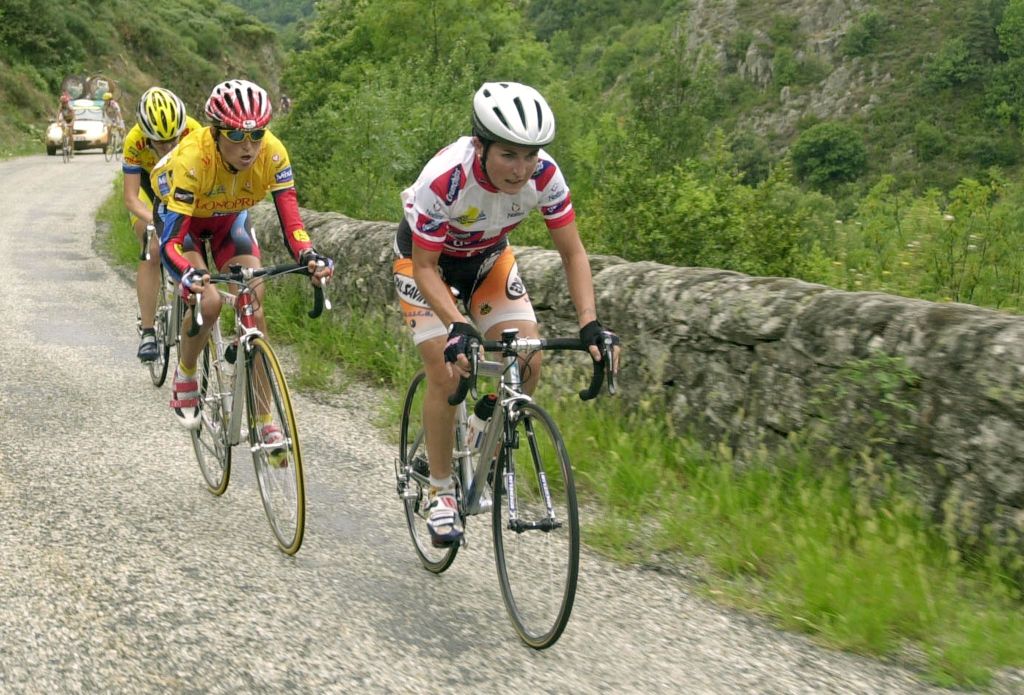
In 1995, I remember the stage with the Madeleine, Glandon and finish in Vaujany. I went in a breakaway after just 3km, and when we started at the foot of the Madeleine, I was in a breakaway for 80km with the yellow jersey, and I won with well over 8 minutes on the second placed rider, who was the great Longo. Even today, if I close my eyes, I can see the street and the people along the road.
In 1996, I remember the finish at the top of the Tourmalet. My teammates got me back again [after a crash], we were more than 5 minutes behind from the group. They managed to bring me back to the group at the foot of the Tourmalet and although I was all sore and bleeding, I had to win to repay them for their work. I won at the top of Tourmalet and pulled on the yellow jersey.
In 1997, I remember the stage with the finish in Sestriere, that crossed into Italy. I arrived alone in the Sestriere wearing the tricolor [Italian champion jersey] and took the yellow jersey. I remember a lot of people, and Italians, on arrival screaming my name, it was a great emotion for me, and it continued even after the arrival when was then wearing the yellow jersey.
Luperini’s third consecutive victory at the 1997 Tour Cycliste Féminin marked the final edition, and she beat world champion Barb Heeb (Switzerland) and Linda Jackson (Canada).
Boué was forced to change his event’s name because the use of 'Tour' was the intellectual property and the trademark of the the Société du Tour de France, which was by this time was part of ASO.
That final edition of the 1997 Tour Cycliste Féminin was 14 stages, with two double days, held from August 13-24. By this time Cyclingnews had developed a more organised landing page for the event. It did not include detailed reports, images or full results, yet, but it had an event preview, details about stages and climbs, and an outline of the principal participants.
In keeping with the website's Australian roots, it also included a form guide of the nation’s top riders along with a list of phone numbers for where they could be reached during the race, and the occasional report provided by the Australian team.
Linda Jackson
I have always been grateful that I had a chance to compete in a women's version of the Tour de France. Tour Cycliste Feminin was that race. It was always brutal. We didn't have the luxury of starting and finishing in the same town very often, so there were long transfers after most of the stages. And long neutrals in blazing heat. Sometimes dinner was what we ate in the car on the way to the next town, and sometimes it was too late to get massage when we got to the hotel so we went to bed with heavy legs. There was always at least one double day as well to double the pain. But we got to race a lot of the iconic mountains that the men raced on, l'Alpe d'Huez, Tourmalet, Mont Ventoux, etc, and that is what made it worth it.
1997 was a grueling edition of the race with 12 days of racing and two double days. I had a pretty consistent race and was sitting in third overall heading into the last day of the race, behind Fabiana Luperini (Italy) and Barbara Heeb (Switzerland). The last day was a dreaded double day. I went into the morning's stage confident of my podium spot and hopeful that if I had good legs, perhaps I could move up. At the last feed of the morning stage, I grabbed my musette, miscalculated the weight, and swung it into my front wheel. Over the bars I went. All of a sudden my goal went from trying to move up in GC to trying to catch back on to the front group. Adrenaline got me back to the group and I managed to finish well in the stage and not lose any significant GC time.
The afternoon's stage was a different story. A few hours off the bike left me stiff and sore. We started the stage and I knew I was in trouble. The stage finished on a long climb. I couldn't keep the pace. Off went Luperini and Heeb, and, Valentina Polkhonova (Russia) who was a couple of minutes behind me in GC. There was nothing I could do. The Canadian National team had worked hard for me and I was about to lose the podium. I put my head down and fought as hard as I could. As I crossed the finish line, Mikhail (Valentina's husband) gestured to me with his hands the number 7. I didn't know what he meant right away, but it turned out that I had kept the podium spot by seven seconds.
The Tour Cycliste Feminin is a race that I will never forget, especially the 1997 edition.
Grande Boucle Féminine Internationale - 1998-2009
With no ties to the Tour de France since 1989 and excluded from all of ASO's intellectual property surrounding the men's race, Boué was forced to change the name of his women's race to La Grande Boucle in 1998.
It featured 15 stages that year, with three double days. The longest stage was 150km from Le Beausset to Grasse. That year, Lithuania's Edita Pucinskaite won overall, Luperini was second, and Alessandra Cappellotto was third.
Cyclingnews' coverage of the race grew from being one landing page to multiple pages for each stage with full stage and general classification results. The coverage also included special reports from Anna Wilson and Giana Roberge. They sent their stories every few days along the route from nearby email facilities and internet cafes located in the towns where their teams would stop for the night between stages.
The Grande Boucle continued as a significant stage race for women through 2003. During that period, the overall winners were Lithuania's Diana Zilute in 1999, Spain's Joane Somarriba in 2000 and 2001, and Zinaida Stahurskaia from Belarus in 2002, while Somarriba would win a third title in 2003.
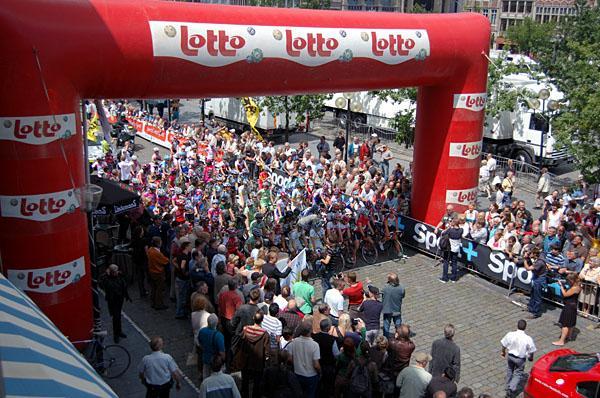
Cyclingnews' coverage of the event improved, too, during those years to include start lists and route maps, to go along with an event preview, and full stage, general classification, and points, mountain, and team classifications.
The event ranged from 14 to 16 stages, double days, and a rest day. However, there were organisational concerns and criticism from athletes and teams, especially over the long transfers. Boué would later design routes that offered fewer transfers between stages and reduced the overall climbing amount, although the 1999 course included Pierre Saint-Martin, Aspin, Val Louron, and Mont Ventoux.
During the 2000 edition, Cyclingnews began including short race recaps and one or two images to go alongside the daily stage results. In the 2001 edition, stages included a full report with quotes from stage winners and pictures from AFP.
In 2002, Cyclingnews' Jeff Jones' byline appeared on the previews, while the content also included start lists, preview and route information, and results. In addition, Chris Henry was brought in as a correspondent to provide full race reports to go along with AFP images from the race. There were also live television details on France 2 and France 3, and other broadcast details so that fans could watch the race from home locally.
The Grande Boucle took a one-year hiatus following the 2003 edition after the event's title sponsorship withdrew funding amid accusations that the organisation failed to pay out prize money.
The final editions of the race were held under a new organisation and it was reduced to a 2.2-classed stage race. The race continued under the Grand Boucle banner and still included challenging terrain but the stages were markedly reduced from 14 stages down to just six.
British riders were successful at the final years of the Grand Boucle with Nicole Cooke winning back-to-back editions in 2006 and 2007, and Emma Pooley winning the final edition in 2009, which by that time was only a four-day race.
As the race downgraded, so did the event’s coverage in the media, and between 2005 and 2007, Cyclingnews provided a main landing page for the race along with start lists, route details, and full results. In 2009, coverage of the Grande Boucle included preview information by Bjorn Haake, and intermittent reports, along with photography from WomensCycling.net and Michael Studer, and results.
The 2009 Grande Boucle was the final edition of the race and had been reduced to just four stages. Marianne Vos won one stage and Pooley won two stages and the overall classification.
A return of the women’s Tour de France
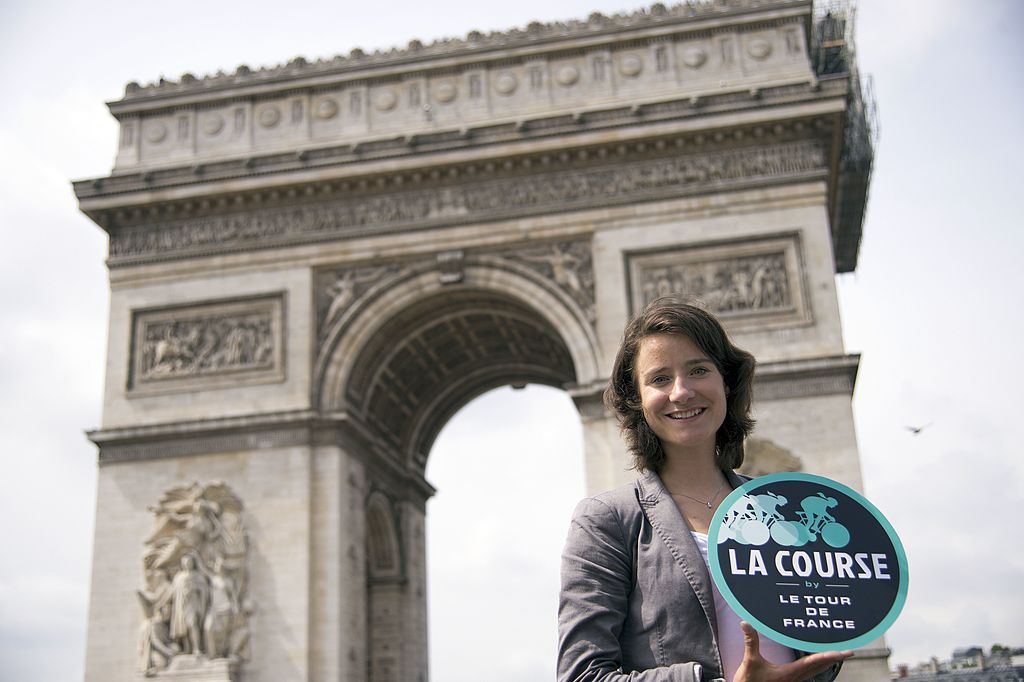
ASO's marquee Tour de France continued to thrive over a hundred years but the organisation was repeatedly criticised for not offering an official women's Tour de France since the original stage race was cancelled in 1989.
La Course by La Tour de France was created in 2014 following a petition to ASO calling for a women's Tour de France. Le Tour Entier's petition was led by Kathryn Bertine, Marianne Vos, Emma Pooley, and Chrissie Wellington - securing 97,307 signatures.
The inaugural La Course was held as a circuit race on the Champs Elysees on the final day of the Tour de France. The sprinter-friendly format saw victories for Marianne Vos, Anna van der Breggen and Chloe Hosking in the first three editions.
Organisers shifted to a two-day experiment in 2017, which saw a summit finish on the Col d'Izoard, held on the same day as stage 18 of the men's race, followed by a time trial in Marseille. Annemiek van Vleuten won both stages and the overall title.
The race then shifted back to just one day in 2018, as a mountainous road race that linked Annecy and Le Grand-Bornand. Van Vleuten won that edition as well, which was held in conjunction with stage 10 of the Tour de France. The race remained a one-day event held on circuits in Pau in 2019 won by Vos, a hilly circuit race in 2020 in Nice won by Lizzie Deignan, and a hilly race in 2021 held from Brest to Landerneau won by Demi Vollering.
It marked the last edition of La Course, with it being replaced by the Tour de France Femmes in 2022.
La Course became one of the most showcased events on the Women's WorldTour, however, at that time, ASO had also been criticised for not following through on its promise to expand its current one-day La Course to a multi-day women's stage race alongside the Tour de France.
Ahead of La Course in 2020, UCI President David Lappartient confirmed that ASO would launch a stage race for women in 2022. At that time he could not confirm the route, number of stages, or that it would be officially named as the women's Tour de France.
ASO stressed at that time that it would be 'logistically impossible' to have the men's and women's Tours de France held at the same time.
There have been differing points of view regarding the timing of the women's Tour de France. Some people think that the women's race should be held at the same time as the men's Grand Tour, while others believe the women's race would attract its own fan base and media attention if the events are separate.
Linda Jackson believed that, regardless of timing, a women's Tour de France is a good step forward for women's cycling, and she reiterated that ASO have the funding and the high-level organisation to support a well-run women's stage race.
"One thing I'll say is that ASO will do it well, and it will live up to expectations. It will be very organized and the riders will be taken care of well. And that will be great for women's cycling," Jackson said.
Tour de France Femmes avec Zwift a huge success
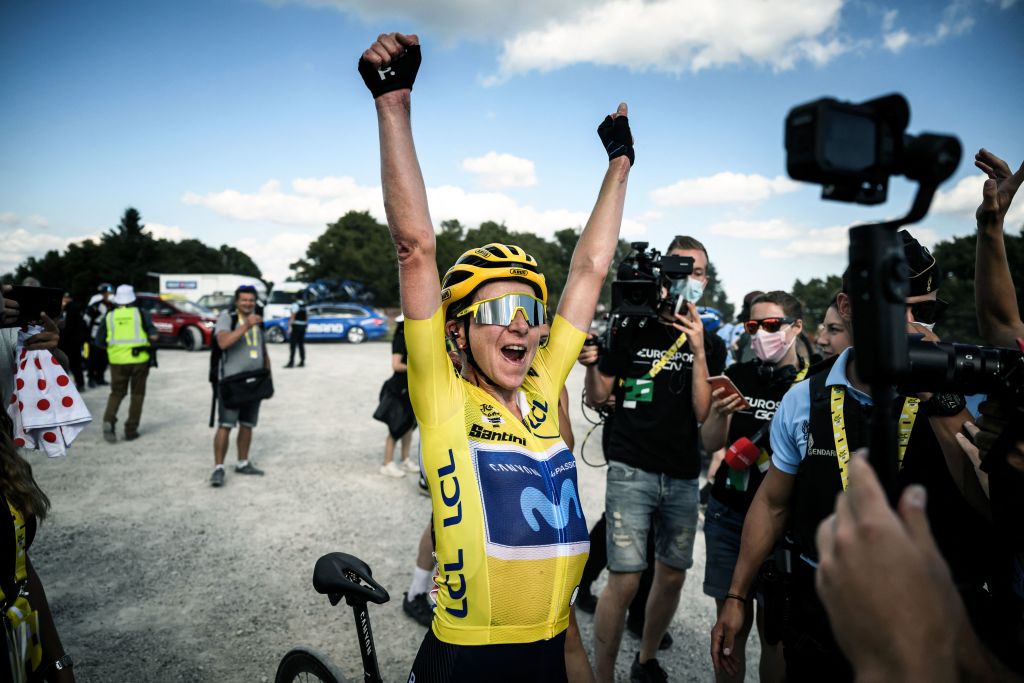
The first edition of the new women's Tour de France was a huge success, starting at the Eiffel Tower, it then travelled to the north-east of France challenging the peloton to four flat stages, two puncheur stages that include a day of racing packed with gravel sectors, and back-to-back mountain stages, before ending atop La Super Planche des Belles Filles, won by Annemiek van Vleuten.
A year after the successful rebirth of the women's Tour de France in 2022, the title sponsor, Zwift, released the viewership data revealing that the race achieved a cumulative live audience of 23.2 million people.
Cyclingnews took a deep dive into the impacts of the 2022 Tour de France Femmes in the feature - You’ve come a long way, baby - Vital statistics show sea change in women’s cycling, which asked if the Tour de France Femmes was a watershed moment, or a cherry on top for a cultural shift that has already taken place in women's professional cycling?
The 2023 edition of the Tour de France Femmes was an equal success with the addition of the Col du Tourmalet, and won by Demi Vollering. Since her victory, she has seen Nike sponsor endorsements and there was speculation that she was offered a €1 million contract for the 2025 season. Cyclingnews took another deep dive into the impact of the Tour de France Femmes on women's cycling after the first two editions in this feature - Million Euro contracts, expansive budgets and trickle-down economics - the Tour de France Femmes effect.
Route-wise, the Tour de France keeps hitting new heights, starting with La Planche des Belles Filles, Col du Tourmalet, and l'Alpe d'Huez. Whether or not the event coincides with the men's Tour de France remains to be seen. The fans and viewers have already shown an appetite for watching the Tour de France Femmes as a standalone, and it has already been a success.
Still, Marianne Martin believes that if hosting an official three-week women's and men's Tour de France together was possible in 1984, it should be possible again for the future of the Tour de France Femmes.
"I firmly believe that you have to set your sights high. For a million reasons, I would love there to be a women's Tour de France, and I want to see it succeed and be the race that it can be for women," Martin said.
"The perfect women's Tour de France, in my mind, would be like we did it back in 1984. I think it should be held at the same time as the men's race. Why would it be any different?"

Kirsten Frattini is the Deputy Editor of Cyclingnews, overseeing the global racing content plan.
Kirsten has a background in Kinesiology and Health Science. She has been involved in cycling from the community and grassroots level to professional cycling's biggest races, reporting on the WorldTour, Spring Classics, Tours de France, World Championships and Olympic Games.
She began her sports journalism career with Cyclingnews as a North American Correspondent in 2006. In 2018, Kirsten became Women's Editor – overseeing the content strategy, race coverage and growth of women's professional cycling – before becoming Deputy Editor in 2023.